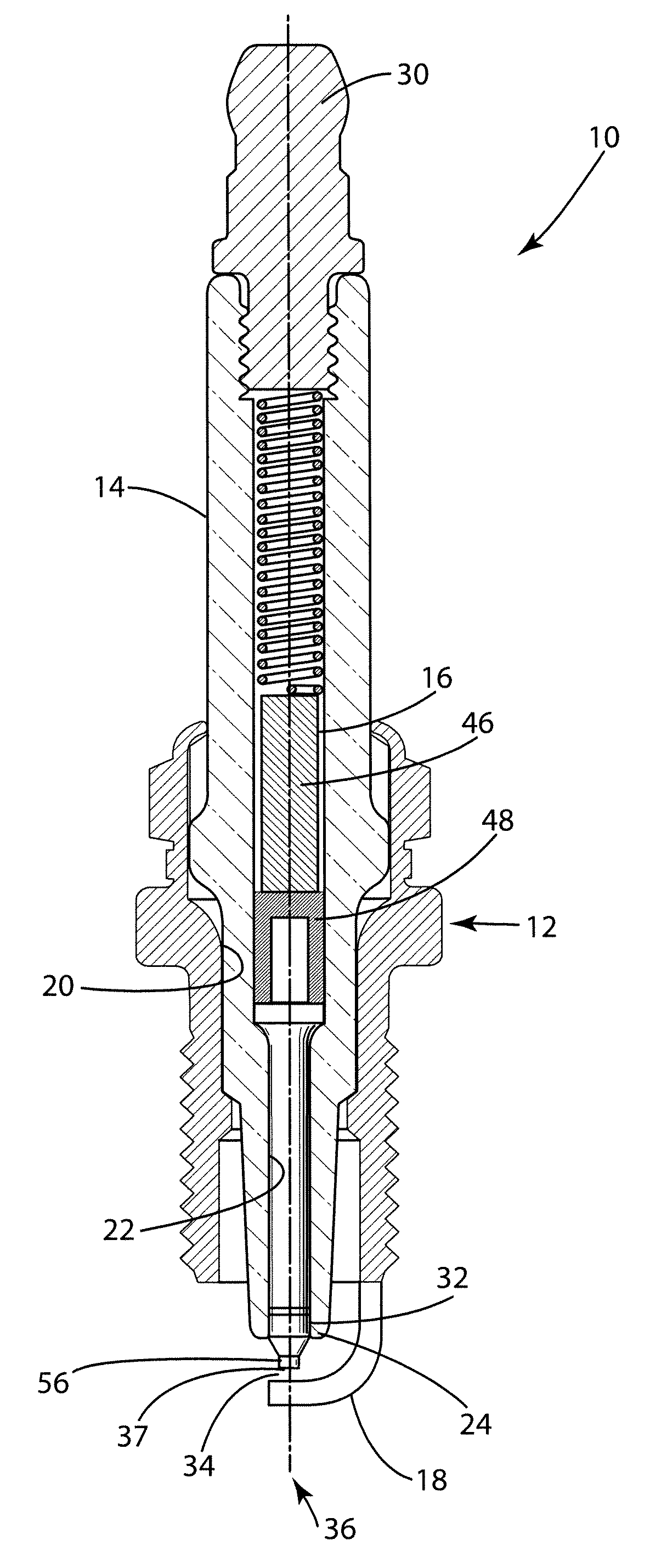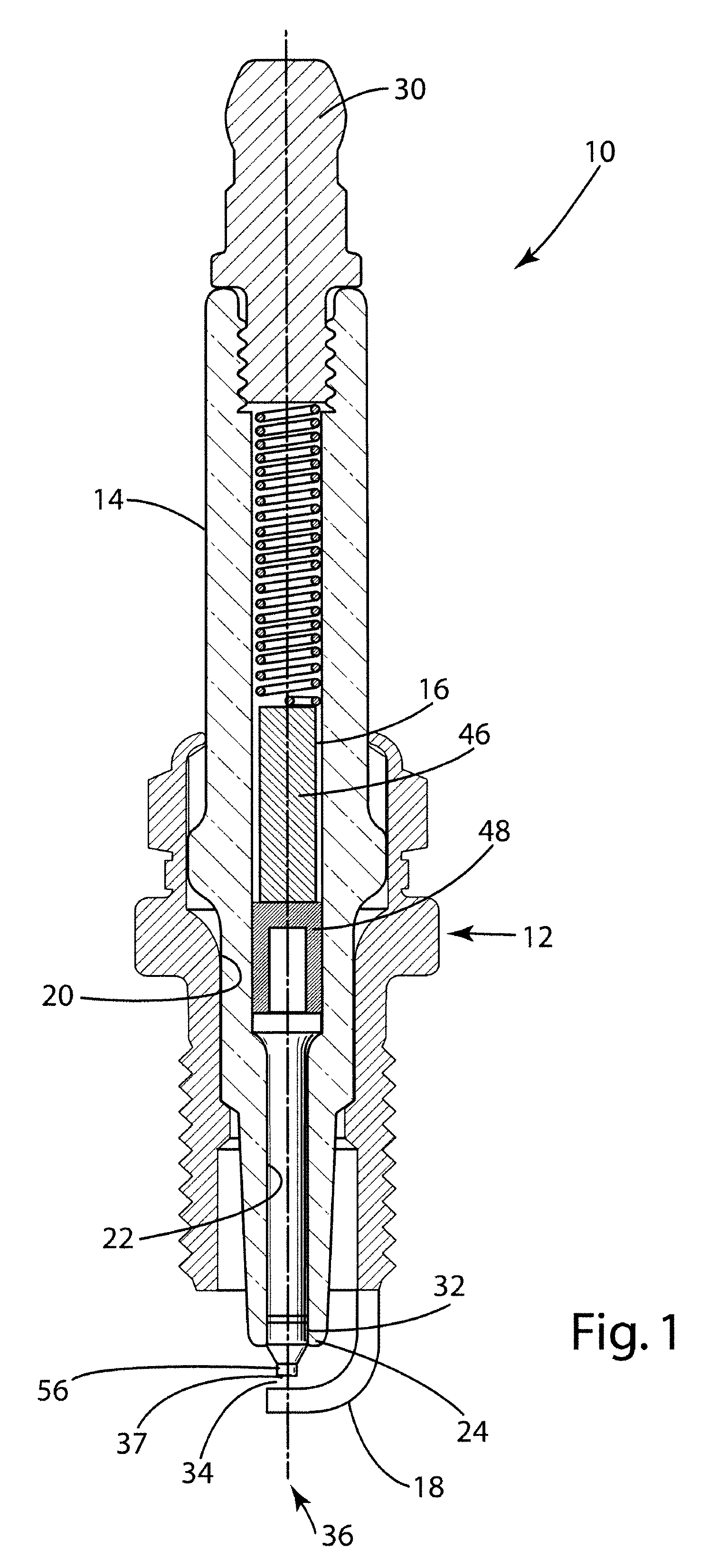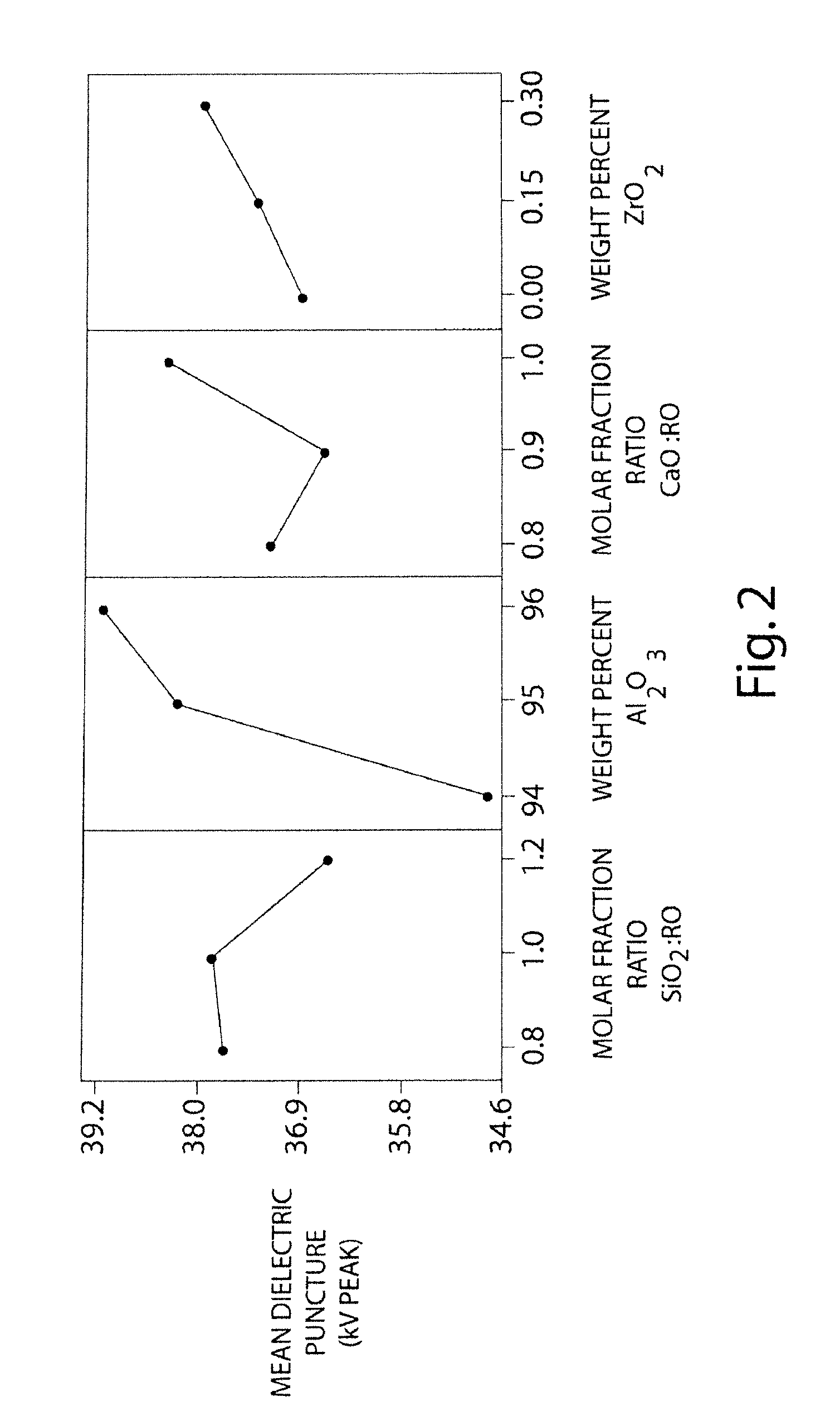Ceramic with improved high temperature electrical properties for use as a spark plug insulator
a high temperature electrical and insulator technology, applied in spark plugs, basic electric elements, electrical equipment, etc., can solve the problems of degrading degrading the components of the spark plug, and the spark may not reliably jump, so as to improve the quality of the spark, improve the shunt resistance and dielectric breakdown properties, and reduce the shunting of the spark plug
- Summary
- Abstract
- Description
- Claims
- Application Information
AI Technical Summary
Benefits of technology
Problems solved by technology
Method used
Image
Examples
Embodiment Construction
[0033]The present invention relates generally to ignition devices for high temperature applications, such as spark plugs, igniters and other spark generation devices. With reference to FIG. 1, there is shown an ignition device comprising a spark plug assembly 10 for use in an internal combustion engine (not shown) that generally includes a metal shell 12, a ceramic insulator 14, a center wire assembly 16, and a ground electrode 18. As commonly known in the art, the shell 12 is a generally cylindrical, electrically conductive component having a hollow bore 20 extending along its axial length. Within that bore 20 are a series of circumferential shoulders sized to support diametrically reduced sections of the insulator 14. Like the shell 12, the insulator 14 is also a generally cylindrical component with an elongated axial bore 22. The lower axial end of the insulator 14 comprises a nose portion 24 which generally extends out of and beyond the lowermost portion of the shell 12. The ins...
PUM
| Property | Measurement | Unit |
|---|---|---|
| temperature | aaaaa | aaaaa |
| voltage | aaaaa | aaaaa |
| operating temperature | aaaaa | aaaaa |
Abstract
Description
Claims
Application Information
 Login to View More
Login to View More - R&D
- Intellectual Property
- Life Sciences
- Materials
- Tech Scout
- Unparalleled Data Quality
- Higher Quality Content
- 60% Fewer Hallucinations
Browse by: Latest US Patents, China's latest patents, Technical Efficacy Thesaurus, Application Domain, Technology Topic, Popular Technical Reports.
© 2025 PatSnap. All rights reserved.Legal|Privacy policy|Modern Slavery Act Transparency Statement|Sitemap|About US| Contact US: help@patsnap.com



